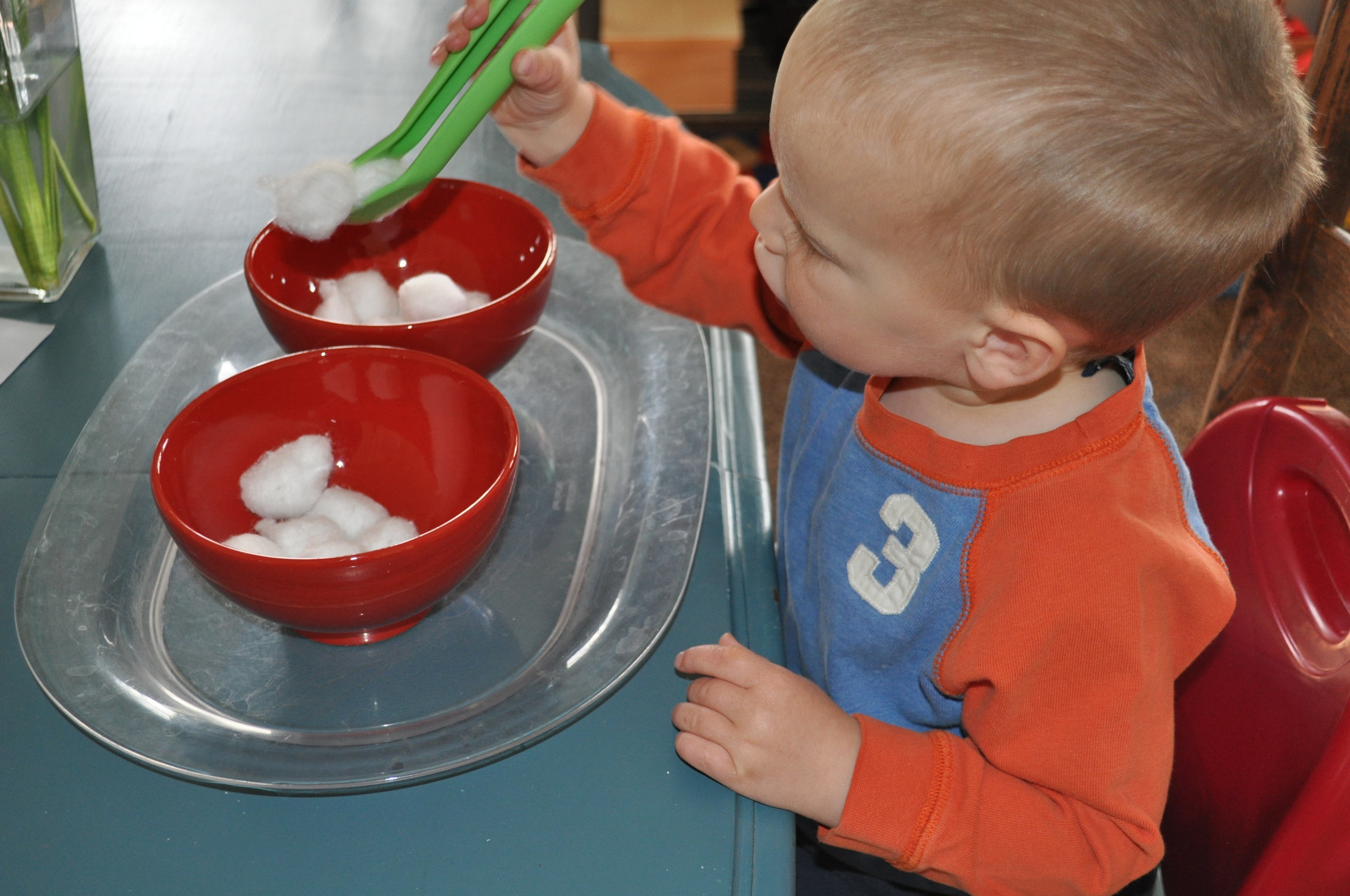The book that started my interest in Montessori education was Mommy, Teach Me! by Barbara Curtis. I started reading Barbara's blog, Mommy Life, at the recommendation of a friend. Barbara had ten children, three of whom have Down Syndrome, two of those being adopted! I wasn’t even married yet, let alone a mom, but her life was fascinating and she wrote in an engaging way. At that time, much of her blog was devoted to Montessori and implementing Montessori in the home. She was a trained Montessori directress, but at some point had decided that having her young children at home was more important than having them in a Montessori school. And she realized that she could do Montessori with them herself at home. I loved her blog and I loved all her ideas, so I bought a number of her books.
 Mommy, Teach Me! made the Montessori method seem so logical and accessible. At that time I didn’t see how anyone could not want to use it. It was allowing your child to learn how to be a human being - following their interests and showing them how to live life. It seemed so natural and obvious and Barbara was so encouraging. Anyone could teach their child preschool. Everyone had things in their home they could use to teach their child.
Mommy, Teach Me! made the Montessori method seem so logical and accessible. At that time I didn’t see how anyone could not want to use it. It was allowing your child to learn how to be a human being - following their interests and showing them how to live life. It seemed so natural and obvious and Barbara was so encouraging. Anyone could teach their child preschool. Everyone had things in their home they could use to teach their child.
The first four chapters of the book lay a foundation of why you can confidently teach your preschooler at home, how to teach them, how to encourage them to learn and how to prepare and understand Montessori activities. The rest of the book (chapters 5 – 11) describes specific activities in detail: how to prepare and present them, what your child is learning from them, as well as, appropriate age ranges for each (which I find really helpful!). It is a wonderful, laid-back introduction to Montessori education and a confidence builder for moms at home with their little ones.
Barbara is a Christian and she talks about her faith in this book. It’s not a dominate topic, but it comes up at relevant moments. I found it to be authentic and not distracting. If you’re an atheist, it might be annoying.
I still go back to this book when I get discouraged. The world of Montessori can be overwhelming with techniques and manipulatives and having to do things the “right” way. Mommy, Teach Me! reassures you that you don’t have to be perfect or do it perfectly, you just need to know and follow your child.
Note: Barbara passed away last fall, but her blog is still up and you can search the archives. Most of the Montessori posts are from years ago. She was active in the Catholic church and active politically and those two topics kind of took over her blog in her later years. Don’t let it scare you away. She wrote some wonderful posts, it just takes a little digging to find them.
Check back with the blog this Friday for a special giveaway featuring this book!






